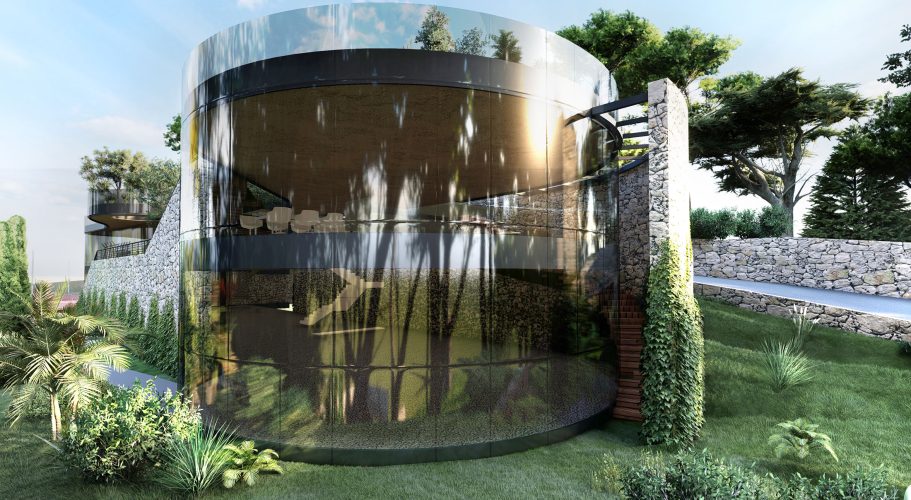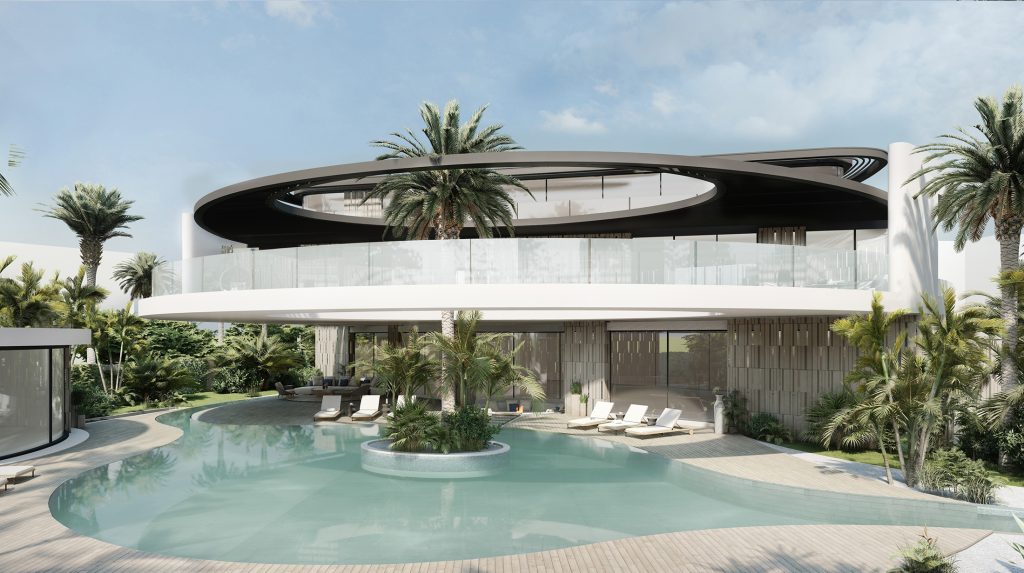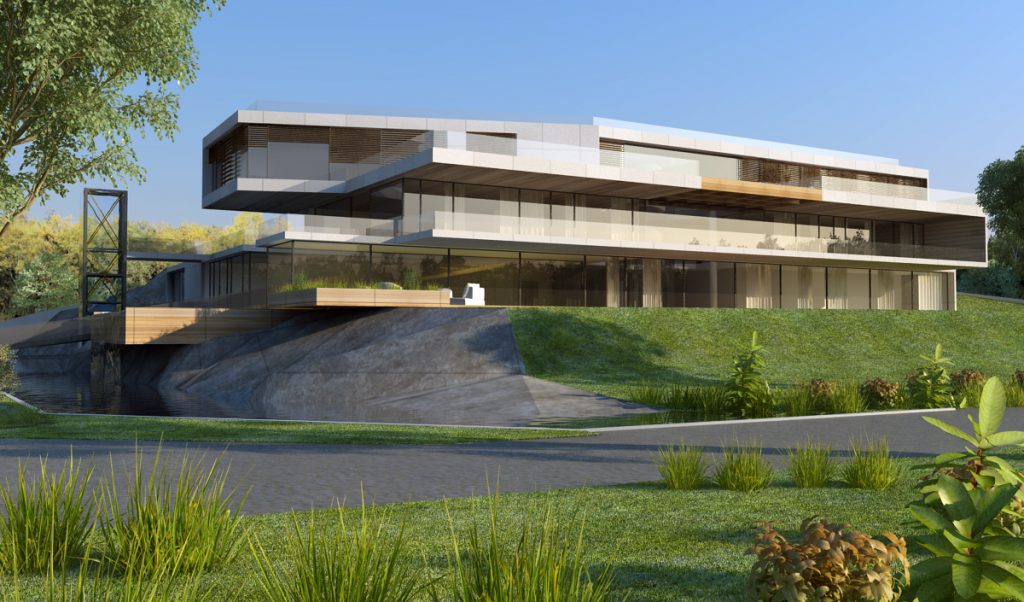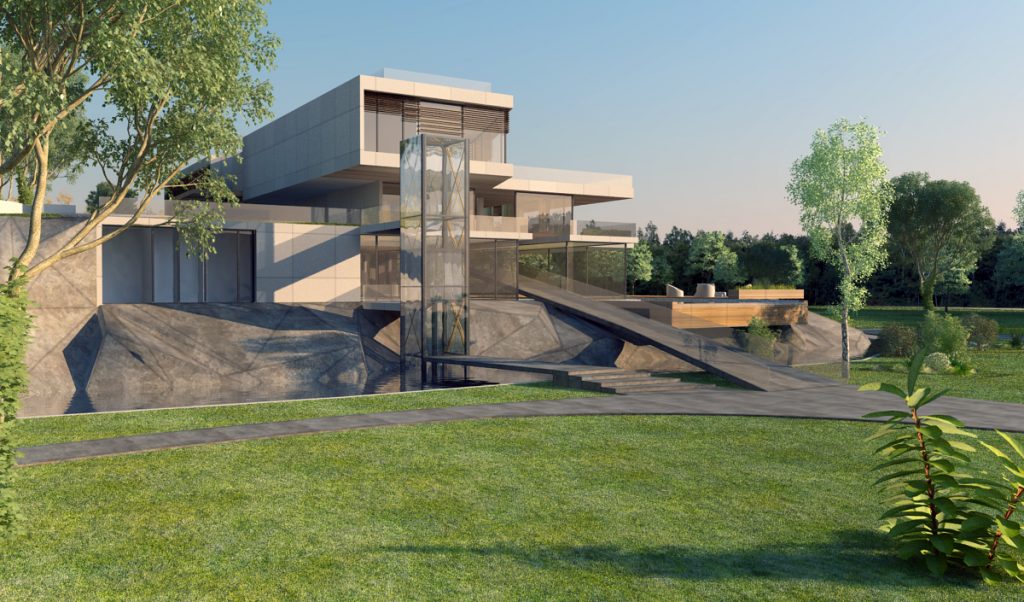
5 min read
As the sun peeks through the cloud, casting its golden glow, we can’t help but dream about a place where light dances freely, illuminating the beauty of transparent architecture.
It’s where glass and steel redefine conventional design, seamlessly merging indoor and outdoor spaces. Transparent architecture, with its striking use of these materials, creates expansive, light-drenched environments that merge the lines between the built and natural worlds. This innovative approach, driven by advancements in technology and materials, is not merely transforming urban landscapes but also revolutionizing relationships with surroundings, offering a blend of elegance and openness.
The DU58 project in Dubai represents Joe Aoun Architecture’s expert use of expansive glass facades. This project stands as a prime example of transparent architecture, harmoniously blending luxurious interior and exterior views. Such innovative endeavors offer a compelling glimpse into the dynamic evolution of transparent architecture within urban settings.
Sky Living : A New Paradigm

The rise of transparent architecture signifies a groundbreaking shift in urban design, embracing a new era of clarity and light. This innovative approach celebrates the seamless integration, creating environments where the boundary between the artificial and natural environments is delightfully blurred. Through expansive glass facades and fluid layouts, transparent architecture not only dazzles with its visual allure but also invites a refreshing connection with the outdoors. This trend embodies a sophisticated desire for spaces that are both visually stunning and dynamically adaptable, setting exciting new benchmarks for contemporary design.
- Technological Innovations
Transparent architecture has evolved significantly due to breakthroughs in technology. Advances in glass manufacturing have led to the development of ultra-thin, high-strength glass that provides unparalleled clarity while maintaining structural integrity. Technologies such as electrochromic glass, which changes tint in response to electrical currents, enhance energy efficiency and user comfort.
- Material Advancements
Modern materials have transformed transparent architecture. The integration of smart glass, which adjusts its opacity based on external conditions, and glass coatings that improve thermal insulation are just a few examples. These innovations contribute to the aesthetic and functional appeal of transparent structures.
Functional Benefits Of Transparent Architecture

- Enhanced Lighting
Transparent architecture maximizes natural light, reducing the need for artificial lighting and promoting energy efficiency. This not only benefits the environment but also creates a healthier and more pleasant living or working environment.
- Improved Spatial Perception
The use of glass and open spaces can make interiors feel more expansive and connected to the outdoors. This design approach fosters a sense of openness and freedom, enhancing the overall user experience.
- Strengthened Connection With Nature
Transparent architecture encourages a greater connection with nature. This design promotes well-being and can improve the quality of life for occupants.
The Impact Of Urban Architecture
- Urban Aesthetics
Transparent buildings contribute to a modern and sophisticated cityscape. The play of light and reflections creates visually stimulating environments that redefine traditional urban aesthetics.
- Community Engagement
Transparent architecture fosters a sense of openness and community. By integrating open-air spaces, these structures encourage social interaction and engagement among residents and visitors.
Architectural Innovation
Transparent architecture challenges conventional design norms and encourages innovation. Architects are continually exploring new ways to incorporate transparency into their projects, pushing the boundaries of what is possible in urban design.Here are projects by JA Architecture that exemplify innovative design and seamless integration with natural surroundings, showcasing transparent architecture and glass facades that enhance visual harmony between built and natural environments.

- SJ35 Saint Jean Cap Ferrat: Perched in the exclusive Saint Jean Cap Ferrat, SJ35 by JA Architecture is a testament to transparent design. Its expansive glass facades create a seamless connection with the surrounding landscape, allowing natural light to flood the interiors while offering unobstructed views of the Mediterranean.
- N105 Nice : Perched on Nice’s Basse Corniche, this villa exemplifies transparent architecture with its glazed infinity pool and corten steel facade, enhancing Mediterranean views and seamlessly integrating modern design with historical restoration.
Other Notable Projects :
- The Edge, Amsterdam : This office building boasts floor-to-ceiling glass walls, promoting transparency and natural light.
- Paris Courthouse : Known for its massive glass panels and innovative use of space, Apple Park is a testament to the possibilities of transparent architecture.
Conclusion

The evolution of transparent architecture represents a dynamic shift in urban design, driven by technological advancements and a desire for greater connection with the environment. Projects like DU58 by Joe Aoun Architecture or their storehouse which is now the showroom of JA Architecture Studio illustrate the transformative potential of this approach, blending luxury with openness in stunning ways. As we look to the future, transparent architecture promises to continue reshaping urban landscapes, offering new possibilities for design, sustainability, and community engagement.
